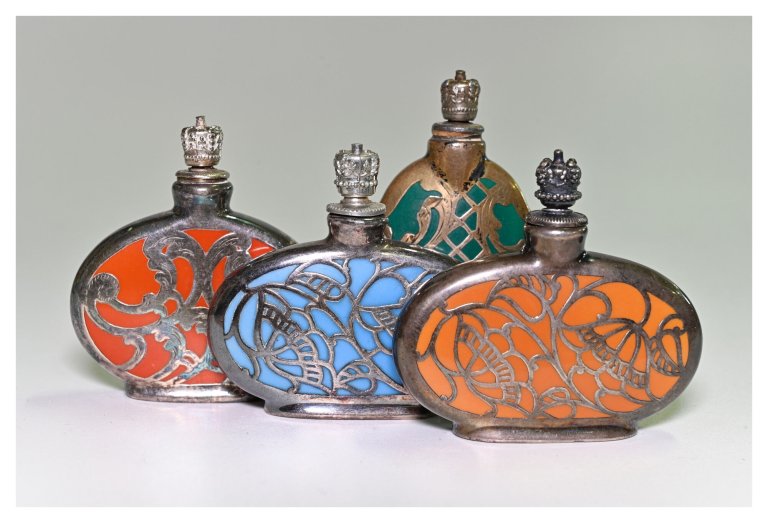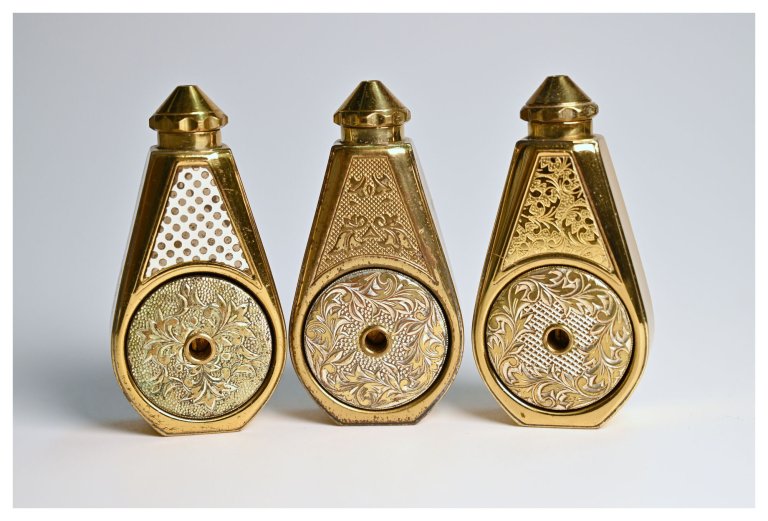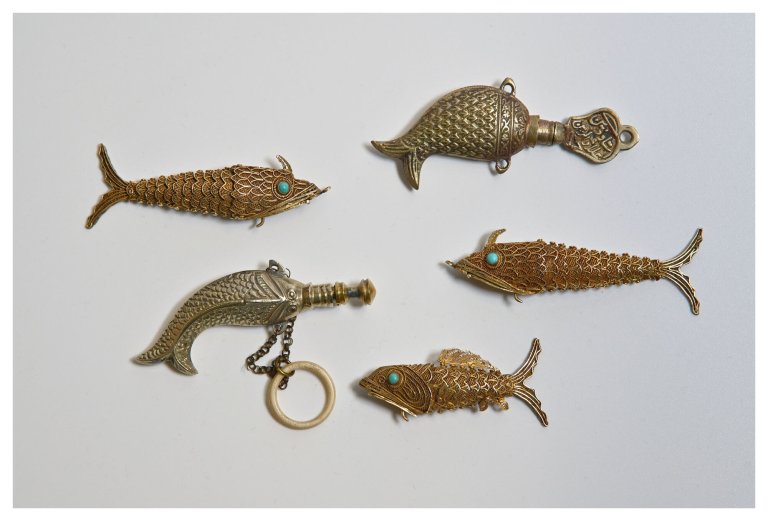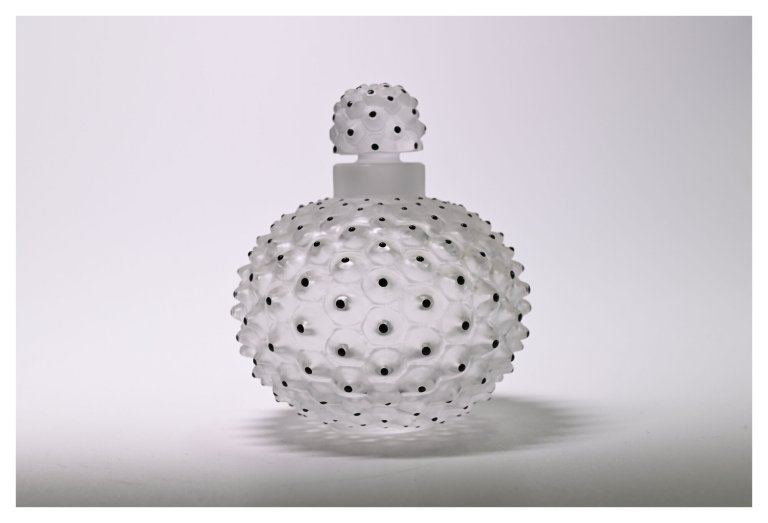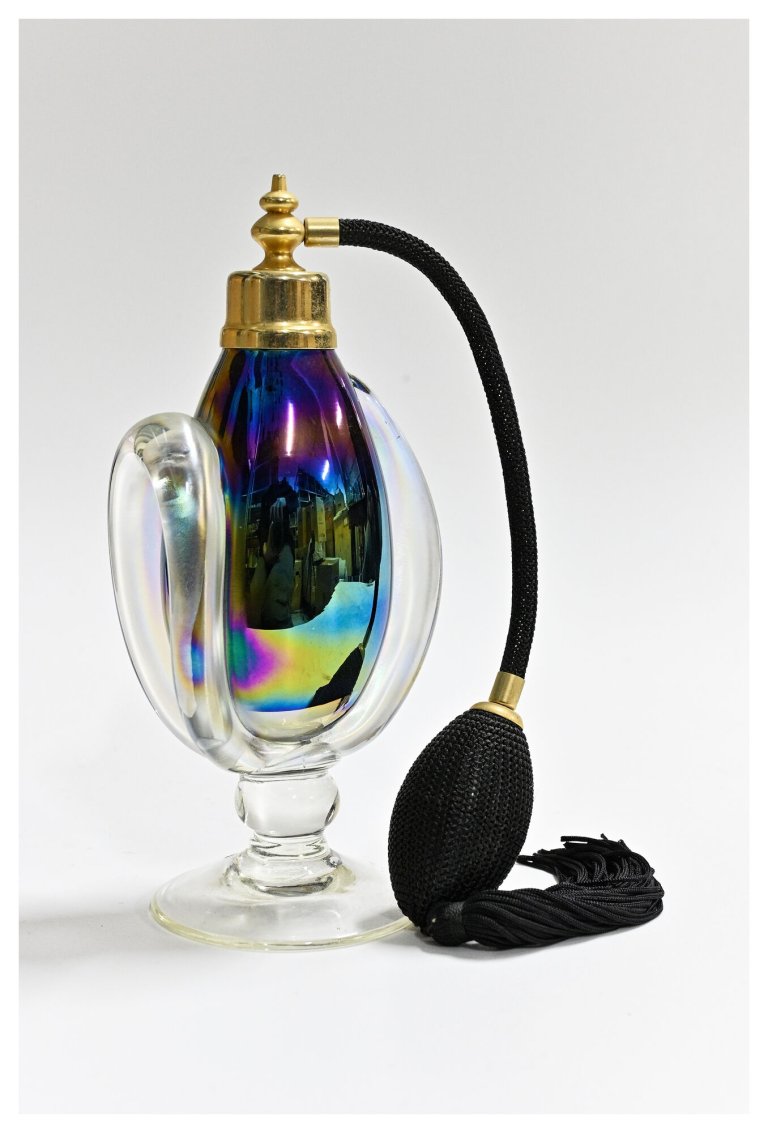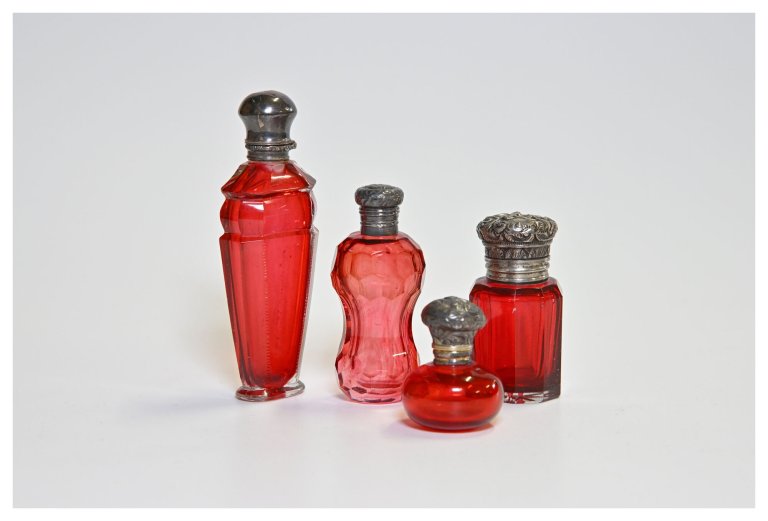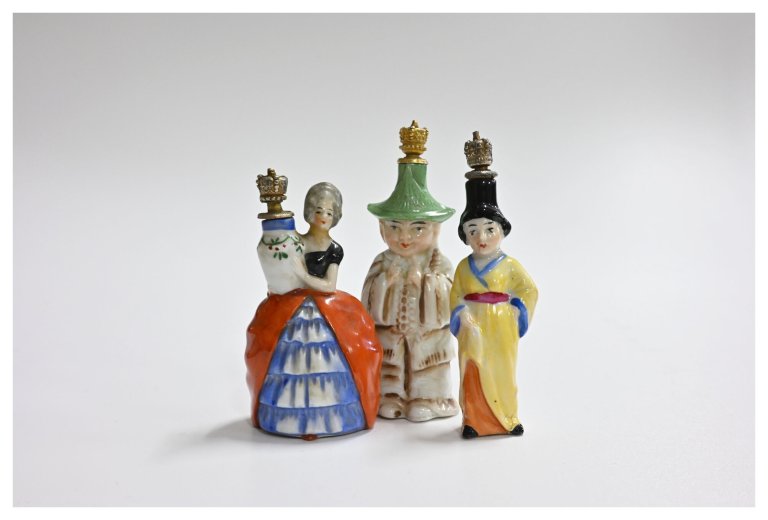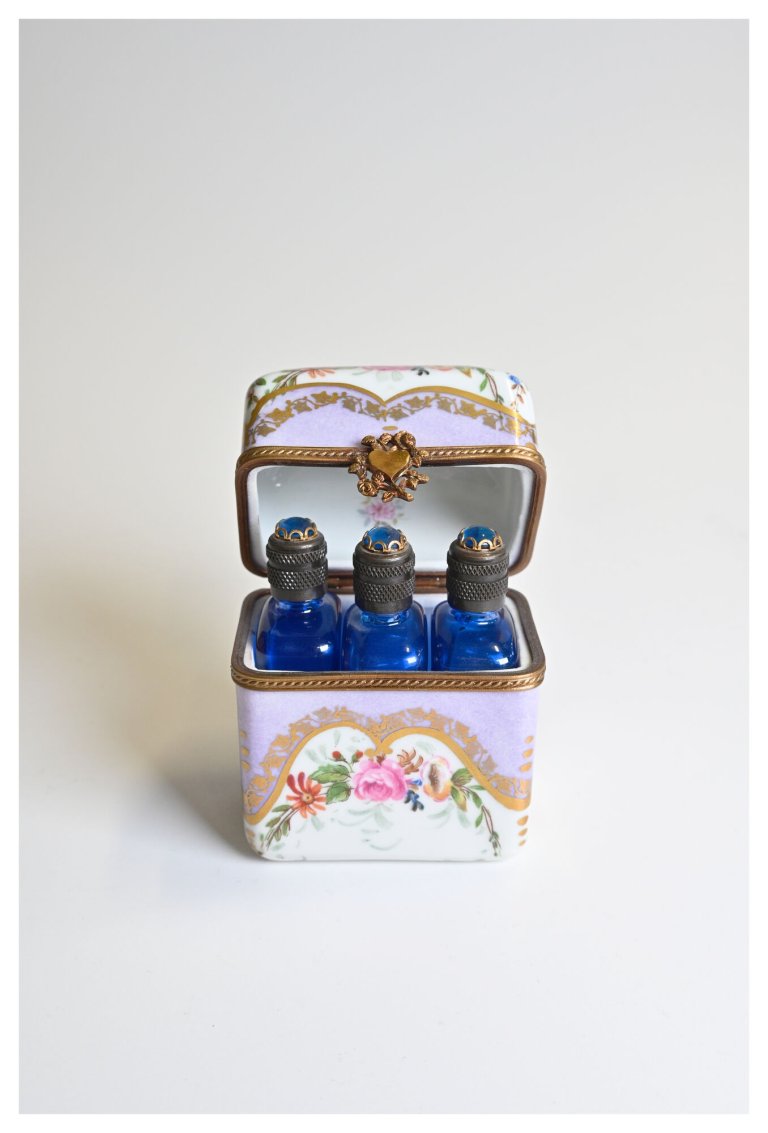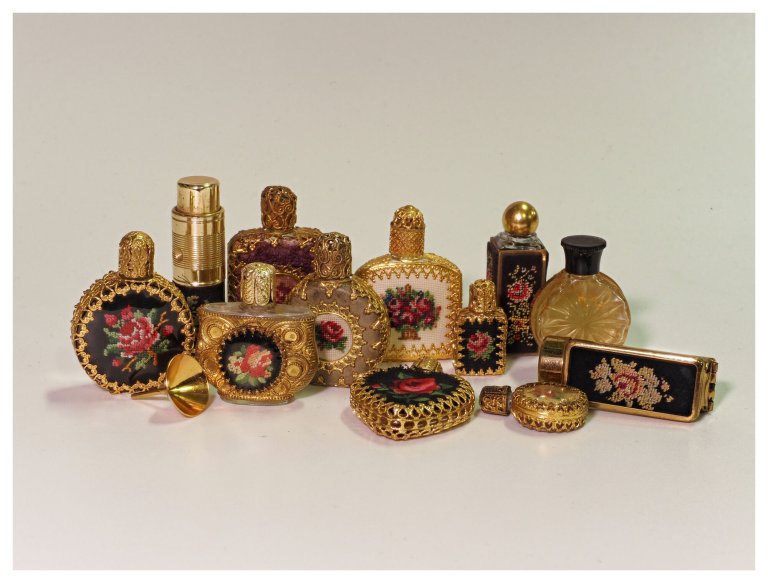A fragrant collection! Flacons in all their facets
Special exhibition at the Couven Museum Aachen
16. November 2024 until May 18, 2025
Opening: Fri 15.11., 18.00
The Couven Museum Aachen is showing a selection of almost 1,300 perfume flacons from the estate of Eupen-born Aachen collector Ilse Sommer, who over the decades collected around 3,000 unusual and in some cases rare flacons - from Roman times to the present day, from miniatures to large factises. The exhibition impresses with its variety of shapes and themes. Curator Carmen Roebers explains: "The very different materials that encased the perfume are impressive: Gold, silver, glass from Lalique, porcelain from Limoges, enamel, tortoiseshell, pearls, semi-precious stones, clay, terracotta, stone and hardwood. However, glass is probably one of the best materials for storing perfume, as it retains the fragrance particularly well. However, it must not be exposed to the sun, which is why coloured glass, also known as forest glass, was sometimes used."
The oldest containers include a small glass perfume bottle from the 4th century BC, while the latest include current bottles of niche perfumes, which, for example, revive old brands that have fallen into oblivion.
"The context in which the topic is curatorially illuminated is particularly exciting," emphasizes Heinrich Brötz, Head of Cultural Affairs. "It's not just flacons that are on display. I find it revealing how social trends, contemporary tastes and design are also reflected in this topic. In this respect, the Couven Museum, as a house for bourgeois living culture, is the ideal location for such an exhibition."
Frank Pohle, head of the Route Charlemagne, adds: "Of course, the fact that we have a significant perfume industry in our region also played a role in our choice of theme. What we are doing here is also a piece of industrial history from the perspective of the city's history."
For Ilse Sommer, her collection was far more than just a hobby. Her passion for perfume bottles was a true "elixir of life" for her. The fragrance "Soir de Paris" by Bourjois was the beginning of her fascination. Even as a child, she succumbed to the magic of the cobalt blue container, which cast a spell over her every time her mother applied the perfume. For over a quarter of a century, she scoured antique stores, markets and exhibitions in search of new treasures for her collection. "My mother developed an enthusiasm for flacons because, for her, they encapsulated the soul of fragrance," explains Miriam Sommer, the collector's daughter. "This passion spread to the whole family, friends and acquaintances. Everyone was delighted when they discovered another special piece at home or abroad and were able to contribute to the collection."
The art of the flacon: from wine bottle to precious container
Once a fragrance has been created, it needs an artistic flacon to make it unmistakable on the outside. The first modern glass flacons were created in France in the 18th century. The word "flacon" comes from the French and refers to small, artistically designed bottles. The variety of historical perfume containers was and still is impressive. Whether made of porcelain, frosted glass or gold-plated, flacons took the form of animals, fruit and hunting scenes and served not only as containers but also as status symbols. As fragrances were once reserved for the wealthy, the artistic design embodied the exclusive character of the perfume. Flacons reflect myths, display sensual or erotic allusions and combine technical and artistic perfection. High-quality packaging also plays a central role in creating emotional connections and influencing consumers' purchasing decisions. The exhibition also shows some examples of this.
You can subscribe to our RSS feed for our press releases here https://www.aachen.de/rss-feed-pressemitteilungen/rss.xml
